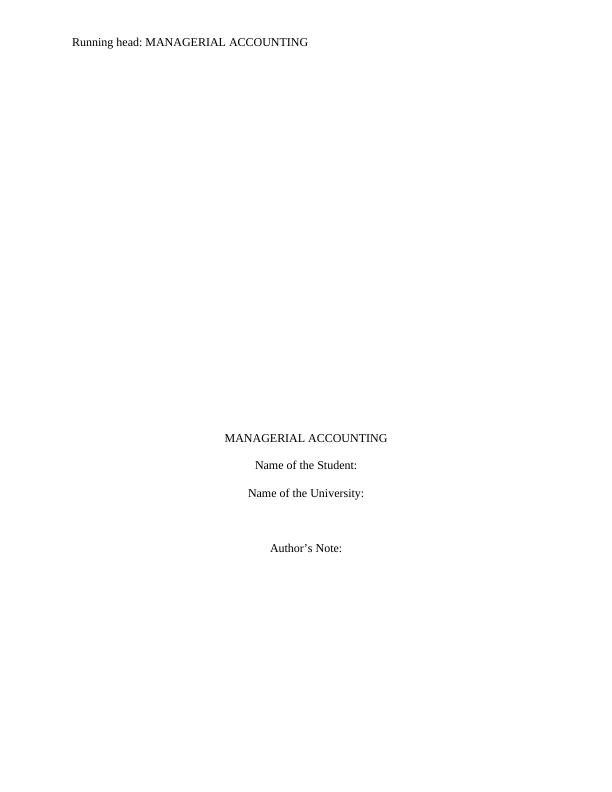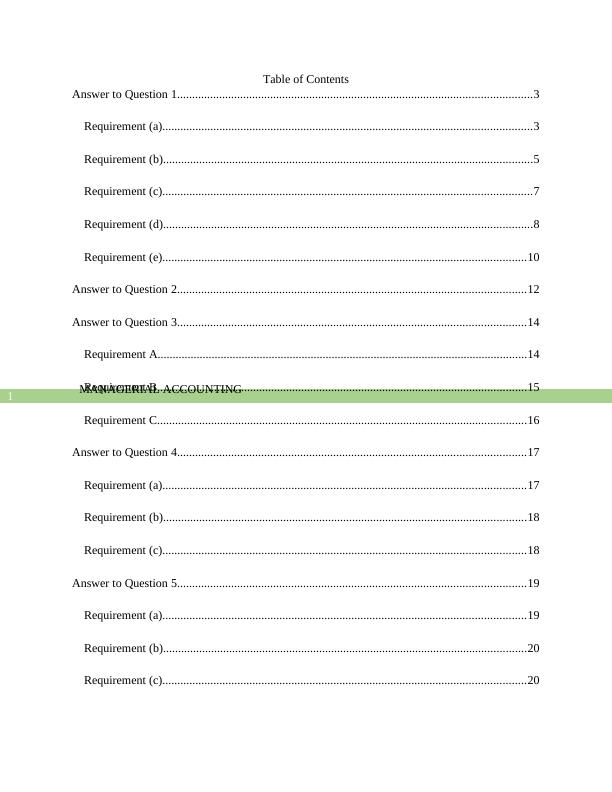Answer to Question 2 12 Answer to Question 4 17 Answer to Question 4 17 Answer to Question 4 17 Answer to Question 4 17 Answer to Question 4 17 Answer to Question 4 17 Answer to Question 4 17 Answer t
30 Pages3829 Words187 Views
Added on 2021-05-31
About This Document
The variance (Created by Author) shows the difference between actual variable cost incurred on indirect materials related to manufacturing process and the actual variable cost which was set by the budgeting process. The variance (Created by Author) shows the difference between actual variable cost incurred on indirect materials related to manufacturing process and the actual variable cost which was set by the budgeting process.
Answer to Question 2 12 Answer to Question 4 17 Answer to Question 4 17 Answer to Question 4 17 Answer to Question 4 17 Answer to Question 4 17 Answer to Question 4 17 Answer to Question 4 17 Answer t
Added on 2021-05-31
ShareRelated Documents
End of preview
Want to access all the pages? Upload your documents or become a member.
Managerial Accounting - Answers to Questions
|15
|4279
|78
Intermediate Managerial Accounting
|5
|697
|216
Benefits of Budgeting, Budgeted Income Statement, Variance Analysis, Cost Estimation and Activity Based Costing
|6
|935
|344
Control Over the Business Analysis 2022
|9
|2259
|22
Management Accounting - question and answer
|14
|1136
|207
Solved assignments for manufacturing overhead and operating income
|6
|523
|209






